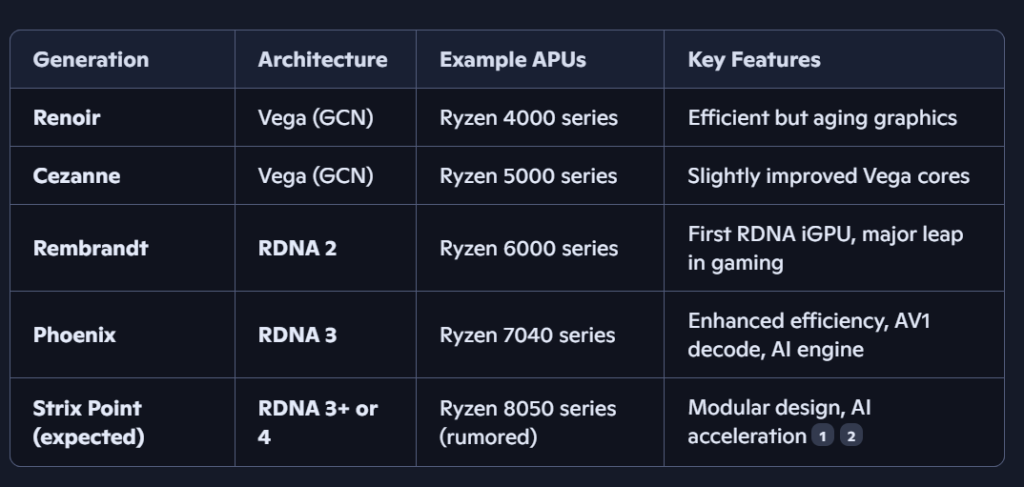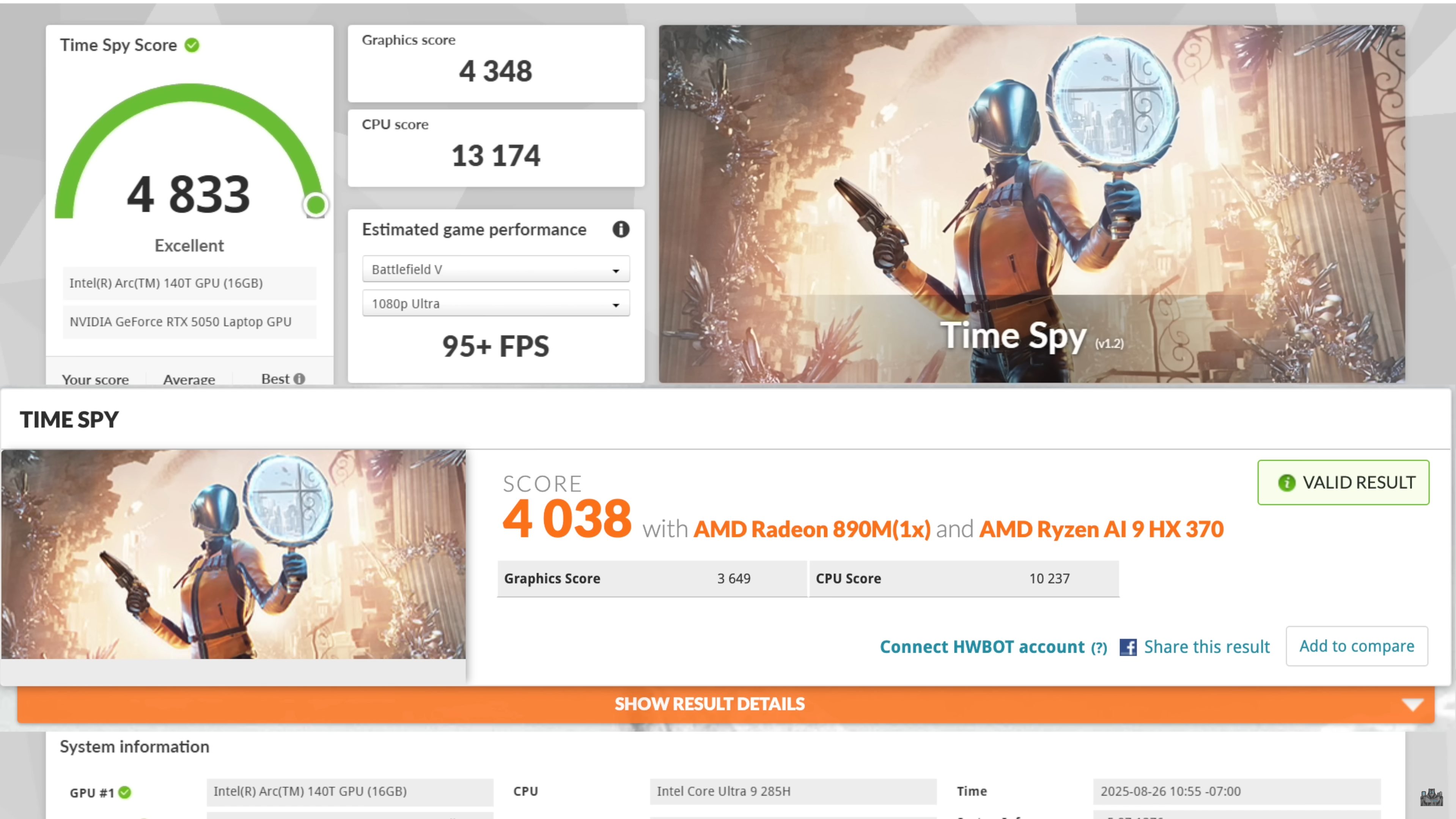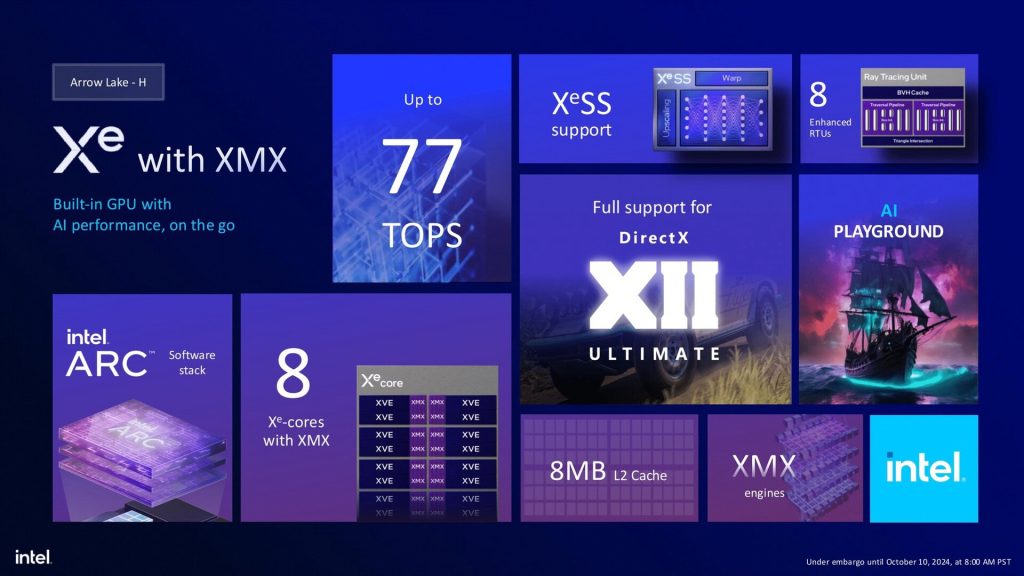- The iGPUs were never intended to offer a decent gaming experience, at least on Intel chips.
- AMD’s iGPU popularity has pushed Intel to finally focus on this aspect of the processor as well.
- Intel’s latest iGPUs, like Intel Arc 140T & 140V, offer marginally better performance than what AMD has to offer right now.
Intel was the first to introduce the concept of iGPUs back in 2010 with its Core i-series processor. AMD sure took clear notes and made decent improvements on it a year later with its Llano APUs. Nevertheless, Intel’s approach to integrated graphics remained the same, unlike AMD, which constantly improved its iGPU to offer better gaming and graphics-related performance. Hence, the reason why Intel CPUs were always paired with a discrete graphics card. Intel has finally abandoned that approach and is now on the same path as AMD.
AMD’s Dominance
AMD has been on the APU path since 2011; however, its true success began with the Zen architecture. The Zen-based APUs incorporated Vega graphics that completely destroyed Intel’s HD graphics. Though Intel did shift to Iris Xe graphics in its 11th-generation processors, it was still lagging behind the Vega graphics. On top of that, the shift of AMD from Vega to RDNA architecture in their Ryzen 6000 series processor further widened the gap between the two. This move again marked AMD as the superior one in the iGPU space in the industry.

Intel’s Major Leap
Now being dominated for a while, Intel revamped its whole CPU and integrated graphics situation. So, instead of calling it the 15th generation, Intel rebranded them to Core Ultra processors (series 1). These processors were better in performance per watt (not to be confused with raw performance) than their predecessors. Moreover, the bundled Intel Xe graphics were miles ahead in terms of gaming performance than the Iris Xe graphics. Things only got better with the Core Ultra series 2 processors that feature integrated graphics, like the Intel Arc 140T.
This is Intel’s fastest iGPU to date and is actually beating AMD’s counterparts in gaming. One of the demonstrations comes from the YouTuber “ETA Prime” who specifically focuses on testing portable hardware with integrated graphics. In his video, he showed that the Intel Arc 140T, which is integrated into the Intel Core Ultra 9 285H, actually performs better than the AMD Ryzen AI 9 HX 370 with RDNA 3.5-based Radeon 890M graphics.
For instance, Intel’s iGPU gave an average of 76 FPS, while the AMD counterpart only managed to push out 71 FPS in Shadow of the Tomb Raider at 1080p Med settings. Same slight improvements can be seen in other titles, as well as the synthetic benchmarks.

Key Reason Behind The Leap
One of the primary reasons behind this leap is Intel’s change in its CPU architecture. Previously, their CPUs were based on the mainstream monolithic die design; however, now they have switched to the disaggregated die design. This allows them to individually customize the chiplets and keep them intact over the Foveros base tile. Meaning, they can improve the graphics power in new revisions without redesigning the whole thing. Not only that, these new iGPUs are based on the Xe architecture, which gives them full support for features like XeSS, XeLL (Low Latency), and XeSS-FG (Frame Gen).

A Step In The Right Direction
Intel has learned from its mistakes and made praiseworthy improvements in the iGPU space. Moreover, beating AMD after years of struggle is a great thing since it will keep the competition running. Which is to provide better performance from all aspects, either the CPU or the integrated graphics, to make the user’s purchase totally worth it. From now on, we can only expect things to get more competitive between the companies, ultimately benefiting the consumers.
Thank you! Please share your positive feedback. 🔋
How could we improve this post? Please Help us. 😔
Zain is our hardware expert, known for deep-dive reviews and round-ups on motherboards, CPUs, RAM, GPUs, and cooling systems. He focuses on performance and value, skipping the marketing hype to give you honest, no-nonsense advice.




